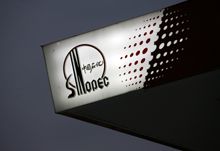Leads Goldman Sachs and Morgan Stanley had already identified strong demand for Sinopec’s bonds: all three US$1bn tranches of the original five-year, 10-year and 30-year benchmark had tightened more than 60bp since launch in May. The stars aligned yesterday, on the back of a better-than-expected jobs report in the US, and the company did not hesitate to add another US$500m to its 10-year tranche at 145bp over US Treasuries, 65bp tight to the reoffer spread in May and just 3bp wide of the pre-deal bid.
On a yield basis, the result was even more impressive, given the rally in US Treasuries since the original deal was printed. The 107.579 pricing resulted in a 2.999% yield, some 94bp tight to the yield at reoffer in May.
Sinopec chose to tap only the 10-year as this was the sweet spot for Asian investors. A five-year would have narrowed the investor base in the region to mostly banks, given how tight it would have priced, and 30-year paper remains mostly the realm of US accounts.
Overall, most bankers in the street had only praise for Sinopec’s transaction. If anything, one person away from the deal questioned why Sinopec did not get an even tighter deal, since the tap drew orders of US$2.6bn from 151 accounts. “Arguably, they should have priced through the curve, the 3bp concession they left behind was unnecessary,” said one banker.
Something on the table
The final pricing of 145bp over was 10bp inside initial guidance of 155bp area, but it was not at the tight end of final talk of 145bp +/-2bp. “I was surprised they did not price at the tight end of final guidance,” said a banker away from the transaction. “It is never ideal to set guidance that cannot be achieved.”
People close to the deal, however, countered that the decision to leave something behind was the result of the company’s responsibility toward its investor base. They said that the best buy-and-hold accounts had drawn a line on the sand at 145bp so the company preferred to keep them on board and leave something on the table instead of squeezing every last basis point and distributing the bonds among lower quality accounts. Besides, it ensured secondray performance.
“This is something that sets Sinopec apart from many issuers in the region: they have a clear sense of how to build a long-term following,” said a person close to the transaction. Anybody who bought the bonds yesterday would agree as they were tightening out of the box, last quoted at 141bp over.
The other aspect that raised eyebrows was the unorthodox decision to retap the bonds in a Reg S only format, thus preventing the US buyers of the original deal from participating. “I can’t imagine large US buyers were happy about this,” said one banker away from the deal.
Another banker suggested that, given the response to the reopening only in Asia, where 85% of the orders originated, a 144a option would have ensured that Sinopec priced through its secondary levels and still performed on the break. “You can understand foregoing the 144a when you want to avoid the more costly disclosure, but they already have to do that anyway, ” said this banker.
People close to the deal explained that adding the 144a would have delayed the transaction and Sinopec may have missed the opportunity available yesterday. Besides, the bonds are fungible with the original 144a notes six to eight weeks after settlement on August 9. So, eventually, the benefit of having the US investor base will be included anyhow and US accounts will be able to buy it, they argued.
